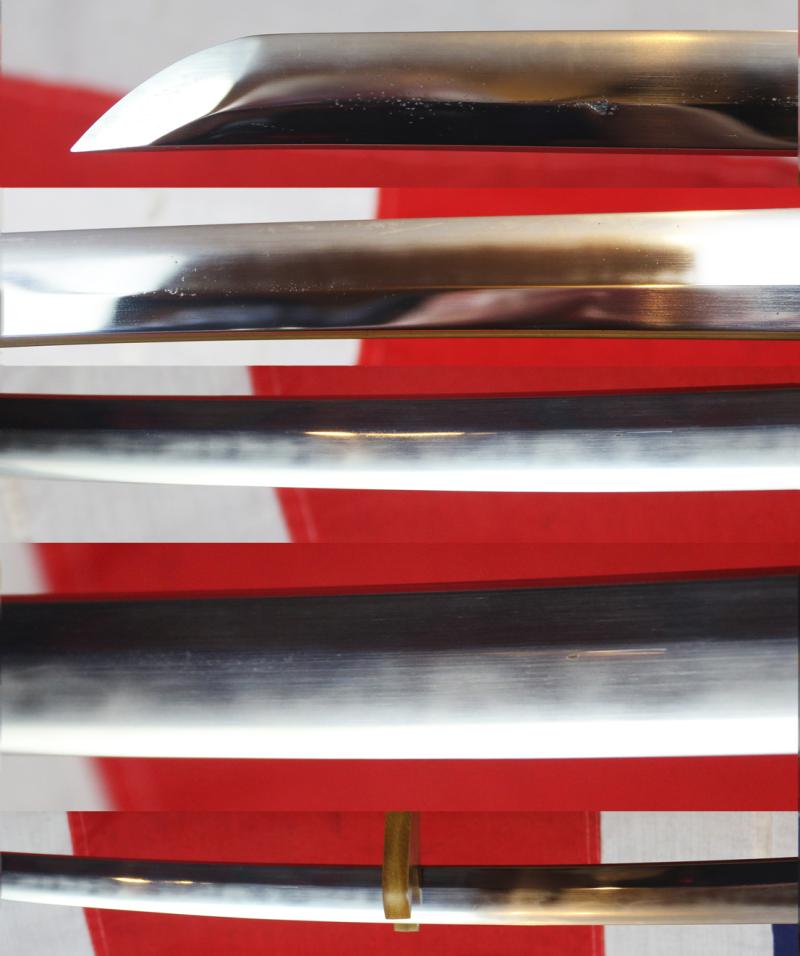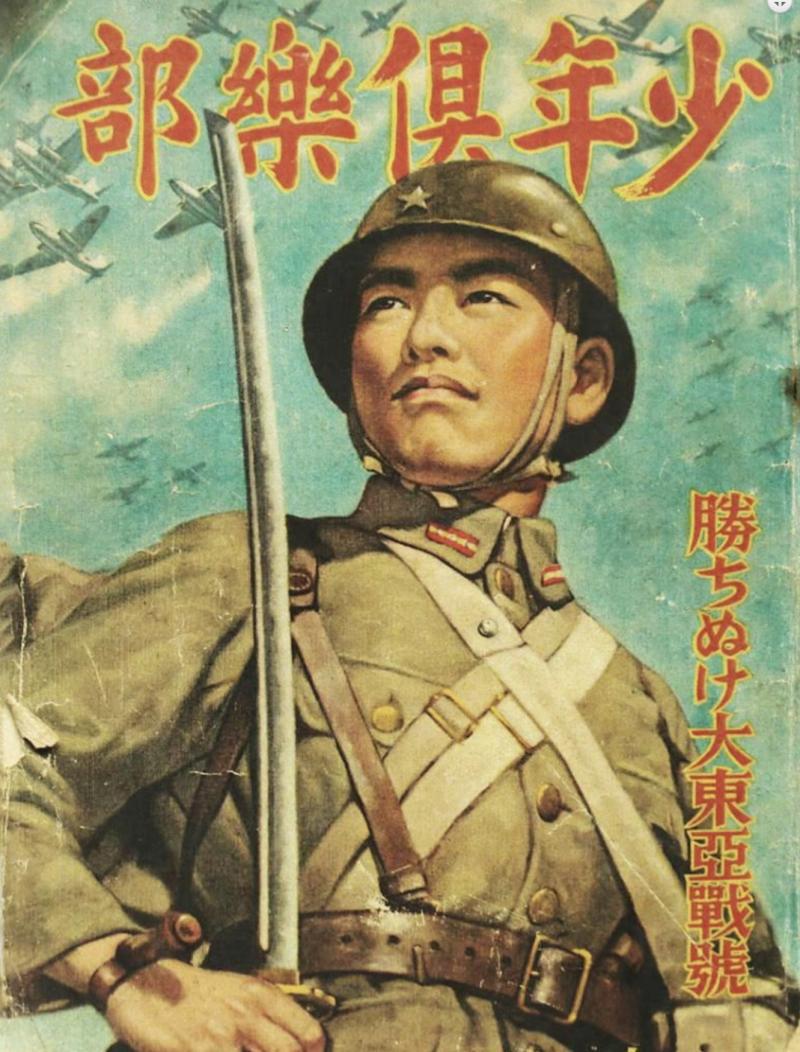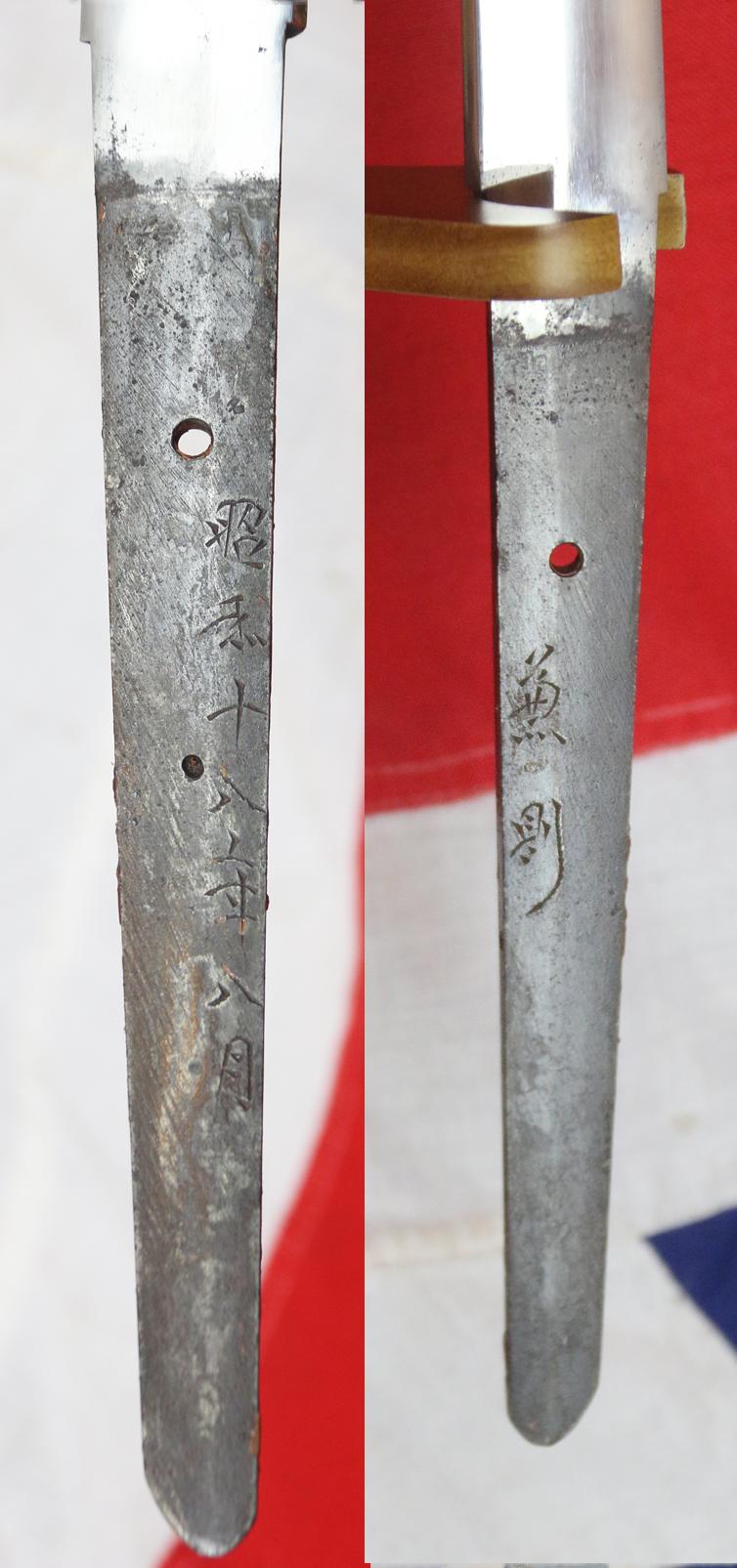A Bespoke Shirasaya For The Kanenori Blade
Sold to Mr S.C.
Signed Kanenori dated 'a lucky day in the 18th Year of Showa {1944 }. Possibly the gendaito smith Noshu Seki Jyu Kanenori(濃州関住兼則)
Only the old worn shingunto leather covered wooden saya scabbard of the sword's original WW2 mounts was originally remaining, but too rotten to save, but the this fabulous sword blade is amazing. This is a Chindit officer's war trophy, and not a surrendered sword. Apparently the Japanese officer was not granted the opportunity in order to surrender his sword, it was taken from him.
Born in the 40th year of the Meiji era (1907) in Seki city, Gifu prefecture, Noshu Seki Jyu Kanenori(濃州関住兼則) was a younger brother of Kojima Kanemichi, one of the most famous swordsmiths in modern times.
Kanenori belonged to the company called Seki Kyoshinsha run by his brother Kanemichi during World War Ⅱ.
Well, this sword had without doubt seen considerable hand to hand jungle combat action. All of the wrap mounts and leather combat cover simply rotted away in the Jungle.
However, the very grey blade was sent by the previous owner to be completely cleaned and polished, and it had been returned to him looking in fabulous condition, then sold to us and now offered here for sale. It could be remounted in a bespoke hand made shirasaya {made by us} or refitted in mounts of choice. Type 98 shingunto possibly or even traditional style.
A problem faced by all the British and Ghurkha Chindits, and Japanese soldiers alike. Leather from uniforms and equipment covers could rot in a matter of months, uniforms would simply fall to pieces, and there are numerous photographs taken of jungle warfare soldiers mid campaign where their uniforms, boots and kit simply fell off their bones. Exactly as it was for Allied POWs in Japanese prison camps in Japanese occupied territories, eventually they were reduced to being naked, having no clothes at all but a simple loin cloth.
Ideal piece of combined Imperial Japanese and WW2 'Chindit', history, perfect to remount in a bespoke, handmade shira saya, or, traditionally as required. We do still have its near complete shingunto leather bound scabbard
Th 4th/9th Ghurkha Rifles were part of 16th Brigade in 1944. On 5 February 1944, Fergusson's 16th Brigade left Ledo for Burma. They avoided Japanese forces by traversing exceptionally difficult terrain. The rest of the Brigades were brought in by air to create fortified bases with airstrips.
600 sorties by Dakota transport aircraft transferred 9,000 men to the landing zones. Chowringhee was abandoned once the fly-in was completed, but Broadway was held with a garrison which included field artillery, anti-aircraft guns and even a detachment of six Mk.VIII Spitfires of No.81 Squadron RAF from 12 March to 17 March. On 17 March they were attacked during take-off by Japanese Ki-43 'Oscars'. S/L William 'Babe' Whitamore and F/O Alan M Peart managed to get airborne, with both shooting down one 'Oscar' each. Whitamore was shot down and killed but Peart survived for over half an hour, holding off over 20 enemy fighters. The remaining Spitfires were destroyed on the ground for the loss of another pilot, F/Lt Coulter. Peart flew back to Kangla the same day in his damaged Spitfire (FL-E JF818) and reported the action.28 The detachment was duly ended by AFC Stanley Vincent, the CO of No. 221 Group.27
Fergusson's brigade set up another base named Aberdeen north of Indaw, into which 14th Brigade was flown. Calvert's brigade established yet another, named White City at Mawlu, astride the main railway and road leading to the Japanese northern front. 111 Brigade set up ambushes and roadblocks south of Indaw (although part of the brigade which landed at Chowringhee was delayed in crossing the Irrawaddy River), before moving west to Pinlebu.
Ferocious jungle fighting ensued around Broadway and White City {all the Chindit bases had British city region names}. At times, British and Japanese troops were in close combat, bayonets and kukris against katanas. On 27 March, after days of aircraft attack, the Japanese attacked Broadway for several nights before the attack was repulsed with flown-in artillery and the aid of locally recruited Kachin irregulars.
The deprivations of the Burma campaign were horrifying for all sides. This is just one account in Burma. Several British soldiers said that the crocodiles preyed on the Japanese soldiers in the swamp. The most prominent firsthand retelling of what happened comes from naturalist Bruce Stanley Wright, who participated in the Battle of Ramree Island and gave this written account:
“That night of Feb. 19, 1945 was the most horrible that any member of the M.L. motor launch crews ever experienced. The crocodiles, alerted by the din of warfare and smell of blood, gathered among the mangroves, lying with their eyes above the water, watchfully alert for their next meal. With the ebb of the tide, the crocodiles moved in on the dead, wounded, and uninjured men who had become mired in the mud…
The scattered rifle shots in the pitch black swamp punctured by the screams of the wounded men crushed in the jaws of huge reptiles, and the blurred worrying sound of spinning crocodiles made a cacophony of hell that has rarely been duplicated on Earth. At dawn, the vultures arrived to clean up what the crocodiles had left.” — Bruce Stanley Wright
The giant lizards had a feast of their lives as nearly 1,000 terrified soldiers dripped blood and sweat into the crowded confines of the Ramree mangrove swamp.
Around 500 Japanese soldiers are believed to have fled the mangrove swamps, with 20 of them being recaptured by British forces who had set up a perimeter around the dense jungle. Around 500 of the fleeing men, however, never made it out of the swamp.
Survivors are said to have heard harrowing stories of hundreds of crocodiles assaulting the soldiers in a mass assault, as well as appalling tales of crocodiles attacking the soldiers individually.
Photo 6 in the gallery shows an example of one of our museum grade handmade & bespoke sword storage and display mounts, a shira saya. Every blade in traditional times, including those now in museums, would have such a set of mounts. This is what we could make for the blade if required, cost around £350.
One side of the blade three inches from the tip has a small area of tiny pin prick marks .
Every single item from The Lanes Armoury is accompanied by our unique Certificate of Authenticity. Part of our continued dedication to maintain the standards forged by us over the past 100 years of trading
Priced for the shirasaya
Code: 25390







